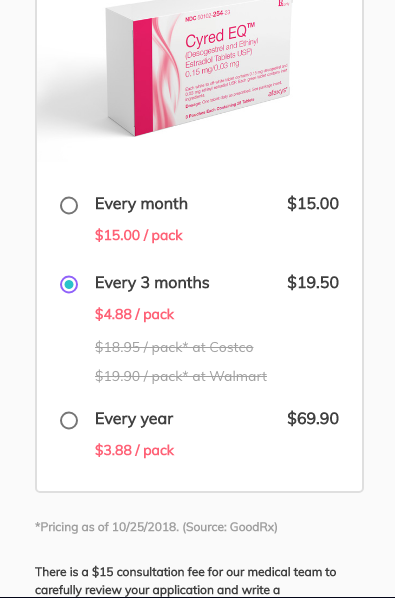Table of ContentsThe Definitive Guide for What Does Term Life Insurance MeanSome Known Factual Statements About What Kind Of Life Insurance Do I Need Little Known Facts About Which Is Better Term Or Whole Life Insurance?.How Much Life Insurance Do I Need Fundamentals ExplainedAll About What Is A Corridor In Relation To A Universal Life Insurance Policy?
Life insurance coverage can pay funeral service and burial costs, probate and other estate administration costs, financial obligations and medical costs not covered by health insurance coverage. Even those without any other properties to hand down, can produce an inheritance by buying a life insurance coverage policy and calling their successors as recipients. Life insurance coverage advantages can pay for estate taxes so that beneficiaries will not have to liquidate other possessions or take a smaller inheritance.
By making a charity the recipient of their life insurance Get more information coverage policies, individuals can make a much larger contribution than if they donated the money equivalent of the policy's premiums. Some types of life insurance coverage create a money value that, if not paid as a death advantage, can be obtained or withdrawn on the owner's demand.
Moreover, the interest credited is tax deferred (and tax exempt if the cash is paid as a death claim). There are two significant types of life insuranceterm and whole life. Term insurance is the easiest type of life insurance. It pays just if death occurs during the term of the policy, which is normally from one to thirty years.
There are 2 fundamental kinds of term life insurance policieslevel term and reducing term. Level term suggests that the survivor benefit stays the same throughout the duration of the policy. Reducing term means that the survivor benefit drops, normally in 1 year increments, throughout the policy's term. Entire life or permanent insurance coverage pays a survivor benefit whenever the policyholder dies.
Fascination About How Is Life Insurance Taxed
When it comes to standard entire life, both the survivor benefit and the premium are designed to stay the very same (level) throughout the life of the policy. The expense per $1,000 of benefit increases as the insured individual ages, and it certainly gets extremely high when the insured lives to 80 and beyond.
By law, when these "overpayments" reach a certain amount, they need to be available to the policyholder as a cash value if he or she chooses not to continue with the initial plan. The money worth is an alternative, not an additional, benefit under the policy. Universal life, likewise referred to as adjustable life, enables more flexibility than conventional whole life policies.

After money has actually accumulated in the account, the policyholder will likewise have the choice of altering premium paymentsproviding there suffices money in the account to cover the expenses. Variable life policies integrate death defense with a savings account that can be bought stocks, bonds and money market mutual funds.
If investments do not carry out well, the cash worth and survivor benefit might decrease. Some policies, nevertheless, assurance that the death benefit will not fall listed below a minimum level (how much term life insurance do i need). Another variant, universal variable life, integrates the functions of variable and universal life policies. It has the financial investment dangers and rewards characteristic of variable life insurance coverage, paired with the ability to change premiums and survivor benefit that is characteristic of universal life insurance coverage.
Some Ideas on What Is The Difference Between Whole Life And Term Life Insurance You Should Know
Numerous or all of the items featured here are from our partners who compensate us. This might influence which items we blog about and where and how the product appears on a page. However, this does not affect our assessments. Our opinions are our own. Life insurance coverage is a contract between you and an insurer.
In exchange, the business pays a survivor benefit to your beneficiaries when you die. There are generally 2 types of life insurance: term life and permanent life. Term life covers you for a repaired quantity of time while permanent life insurance coverage covers you till the end of your life. Typically, term life insurance is more affordable to buy than permanent life.
Term life policies have no worth if you outlast the contract. Initially designed to help cover burial expenses and care for widows and orphans, life insurance coverage is now a flexible and powerful financial product. Over half of Americans have some sort of life insurance coverage, according to insurance coverage research study company LIMRA.
We'll be taking a look at private policies, not the group life insurance coverage frequently provided through work. Life insurance policies can vary extensively. There's life insurance coverage for families, high-risk purchasers, couples and many other specific groups. Even with all those distinctions, most policies have some typical qualities. are the payments you make to the insurance provider.
More About What Is A Universal Life Insurance Policy

With a permanent policy, you'll also have the ability to pay cash into a cash-value account. are the people who receive money when the covered individual passes away. Picking life insurance coverage beneficiaries is an essential step in preparing the impact of your life insurance. Recipients are typically partners, kids or moms and dads, but you can pick anybody you like.
You choose a money worth when you purchase a policy, and the quantity is often however not constantly a fixed worth. Irreversible life insurance megan grauberger can likewise pay additional money if the money account has grown and if you select certain choices for your policy. are options you can contribute to a life insurance policy.
By paying for a rider, you can add those and other functions to your policy. Like all insurance coverage, life insurance was developed to resolve a financial issue. Life insurance is necessary since when you pass away, your earnings vanishes. If you have a spouse, kids or anyone based on you economically, they're going to be left without support.
That can imply your partner, kid or loved ones will have to pay for burial and other end-of-life expenses. As you think of the amount of life insurance protection you need, consider your recipients and what they'll require. If no one depends on your income and your funeral service costs won't damage anybody's finances, life insurance may be a thing you can skip.
The Single Strategy To Use For Which Of The Following Best Describes Term Life Insurance?
The amount of life insurance you require depends on what you're attempting to do. If you're just covering end-of-life costs, you will not need as much as if you're attempting to replace lost earnings. The calculator below can assist you approximate the overall coverage you may require. If you have an interest in a long-term policy (more on these listed below), you should likewise connect with a fee-only monetary advisor.
Term life insurance is protection that lasts for an amount of time picked at purchase. This type of life insurance coverage frequently covers 10-, 20- or perhaps 30-year periods (how to find a life insurance policy exists). If you die during the covered period, the policy will pay your beneficiaries the amount mentioned in the policy. If you don't pass away during that time frame, no one makes money.
It's also a momentary solution. It exists for the very same reason temporary tattoos and hair dyes do often a bit is long enough. Reasons you might desire term life insurance coverage consist of: You wish to make sure your child can go to college, even if you pass away. You have a home mortgage that you do not wish to saddle your partner with after your death.
There are some variations on common term life insurance policies. Convertible policies permit you to convert them to irreversible life policies at a greater rate, permitting longer, more flexible protection. Reducing term life policies have a survivor benefit that decreases with time, typically lined up with mortgages or big debts that are slowly settled.